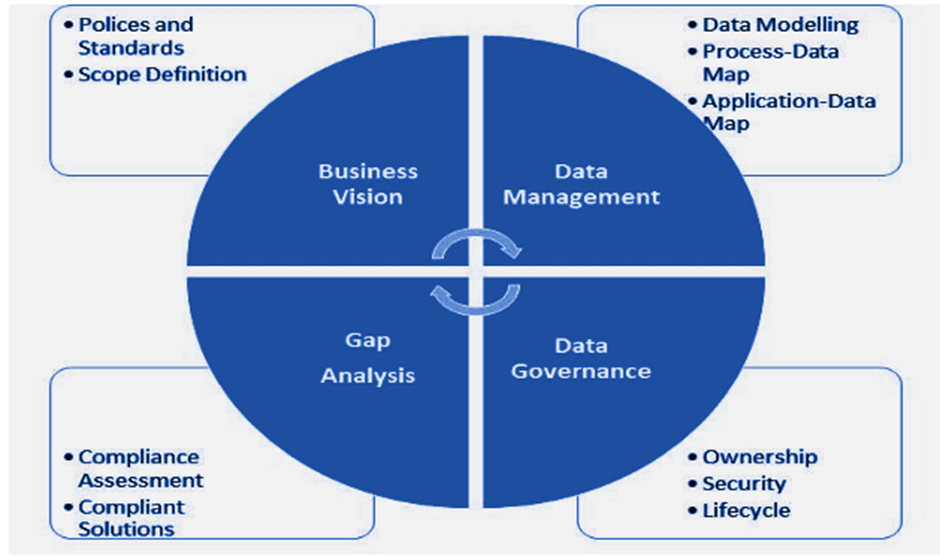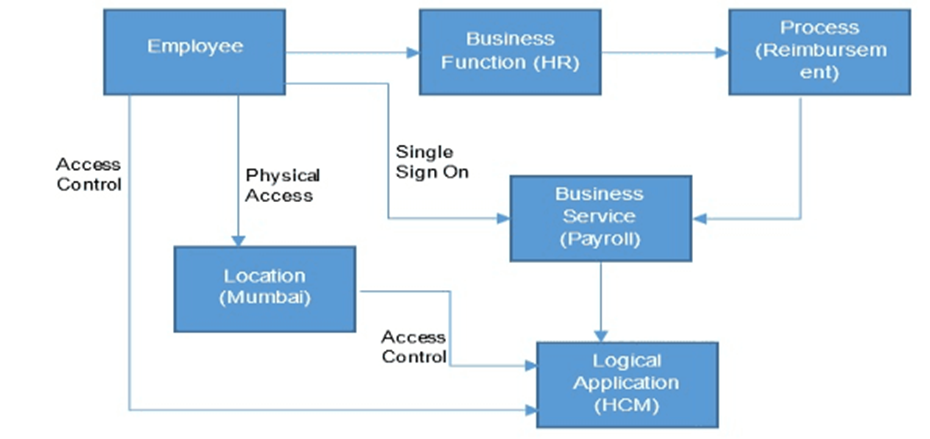Data Architecture
- Anand Nerurkar
- Mar 26, 2024
- 3 min read
Data Architecture can be defined as-
The Open Group Architecture Framework (TOGAF) provides a methodology and a set of tools for developing an enterprise architecture, which includes data architecture as well. As per the IT aspect of an organization, a simplified approach with reference to TOGAF, to establish data architecture is as follows-
The Data Architecture approach can be divided into four major areas as follows-
1. Business Vision
2. Data Management
3. Data Governance
4. Gap Analysis
Let us have a look at the subsequent sections along with their respected areas, as follows.
1. Business Vision:
The reason behind establishing the data architecture is to develop a high-level vision of the business values to be delivered. The business vision is to ensure the precision and uniformity of data, and all data should be captured from the correct source without any manual intervention.
According to the business vision, the data architecture policies and standards are defined. The scope of data architecture is defined as per the organizational needs. Let us consider an instance, where the scope of data architecture is limited to Business KPI’s of enterprise business activities.
2. Data Management:
If the data is structured and comprehensive, it enables the effective use of data. The purpose of data management activities are as follows:
· Identifying the master data, reference data, and transactional data.
· Identifying the utilization of the data entities of business functions, processes, and services.
· Identifying how and where data entities are created, stored, delivered and reported.
· Identifying data conversion complexity level to exchange information between applications.
· Identifying software required for the data integration with the customers.
Let us have a look at some data management aspects:
· Data Modelling–
Data modelling describes the structure of data entities with their relationships. It consists of 3 types-
· The conceptual data model holds implementation details to focus on the entities and their relationships and attributes that are evoked in the domain where problem arises. Generally, this model is used for communication with the stakeholders.
· The logical data model is an updated version of the conceptual data model in the data management technology. A perfect example for this is relational databases. It includes the subject of normalization.
· The physical data model consists of the implementation of data entities. It includes optimizations consisting of merging entities, duplicating data, creating identification keys and indexes.
· Process-Data map–
Process-data mapping helps to understand the data entities utilizing the business functions, processes, and services.
C – Create, R – Read, U – Update, D – Delete
3. Data Governance:
Data Governance ensures that the enterprise should have accountability, quality, integrity and security of data. The purpose of data governance is to:
· Identifying the organizational structure and the standards required to manage the data.
· Identifying the employees with skills and roles for data transformation in an enterprise.
· Identifying the data entities to manage the business processes.
· Identifying the data control and archival requirements.
Let us have a look at some data management aspects:
· Ownership (Role–Data matrix) –
It identifies the organizational structure and the standard bodies involved in the management of data entities. Following is the diagram to explain this in an easy way.
C- Create, R- Read, U- Update
· Security–
The Data Security aspect depicts which actor (person, organization, or system) can access to which attributes through various business processes and applications. It can be well studied from the diagram.
· Life-Cycle:
Data life cycle captures data entities and its processes involved in various stages throughout the life-cycle of one process. It stems from the creation stage, progresses to the storing stage and finally ends when it is deleted.
Gap Analysis:
This process consists of verifying the data architecture against the data principles and business vision. Following are the solutions to understand what gap analysis is and how to overcome the gaps by finding the high-level solutions-
· Compliance Assessment–
This matrix illustrates the functional and technical charges in the current architecture.
· Complaint Solutions–
This matrix illustrates the potential building block architecture and solution for functional and technical charges in the current architecture.
The outcome of the data architecture is not restricted to the architecture definition document, updated versions of the architecture vision and the validated data principles. Data architecture framework is the major part in TOGAF course which provides the set of rules for developing the entire organization’s architecture.
.png)





Comments